 |
|
The trains of THE PORT STANLEY TERMINAL RAIL Inc. travel over the tracks and roadbed of one of Ontario’s oldest railways, The London and Port Stanley Railway, which was designed to alleviate congestion on a plank road that had been built to connect Port Stanley and London. Entirely constructed by hand labour, the railway project was begun in 1853 shortly after the Great Western Railway reached London. Both railways were constructed to the broad gauge of 5 feet. A few years later this was changed to the standard gauge of 4 feet-8 1/2 inches. The first train to reach Port Stanley was a passenger train on July 5th 1856. 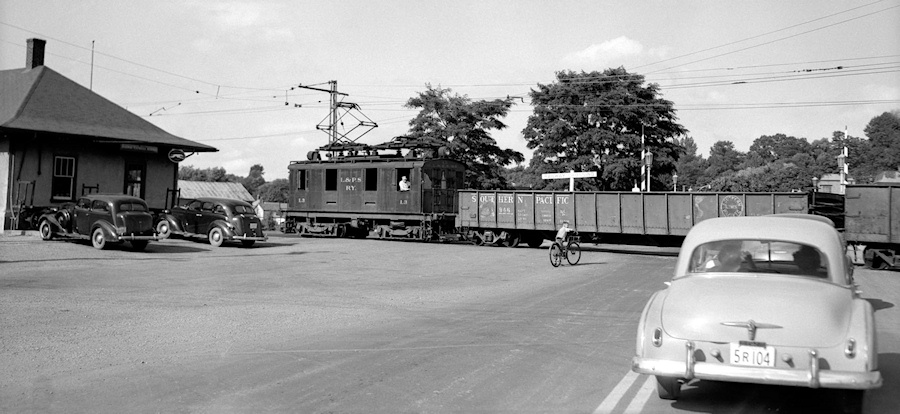 During the next 59 years, thousands of steam trains traveled the 23 mile route, carrying passengers and freight to and from the bustling city of London and the thriving port at Port Stanley. Many shiploads of coal, lumber and other products arrived at the port to be shipped out over the railway in this period. In 1913 the City of London, who owned the line, chose to assume its operation. Adam Beck, the influential promoter of Hydro Electric power from Niagara Falls and mayor of London at the time, rebuilt the line into a modern high-speed electric operation. Smoke free electric trains enticed excursionists to travel to Port Stanley, where passengers could enjoy the L&PS amusement park, swim in a rented bathing suit from the L&PS bath house, dine in the L&PS cafeteria, or dance under the stars at the L&PS Pavilion. The Pavilion, later known as the Stork Club, was renowned for top name entertainment, with the likes of Louis Armstrong, Benny Goodman and London’s own Guy Lombardo frequently heading the list of performers. 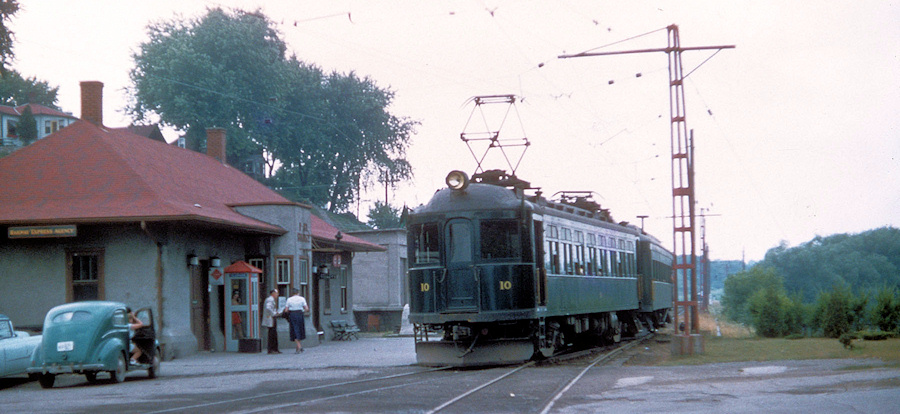 Passenger traffic plummeted following the Second World War after reaching a peak of 1.1 million in 1943. The end of gas rationing and more use of the automobile caused the end of passenger service on February 1st 1957. From 1915 to this time, over 28 million people had ridden the L&PS. The Railway and its remaining freight traffic were traded in 1966 to the Canadian National Railways, for the CNR car repair shops property at York & Rectory streets in London. While the London-St. Thomas section of the line remained as a busy freight corridor, the section of the L&PS from St. Thomas to Port Stanley was abandoned in 1982 after a washout at Union. The section had received little maintenance up to that time. 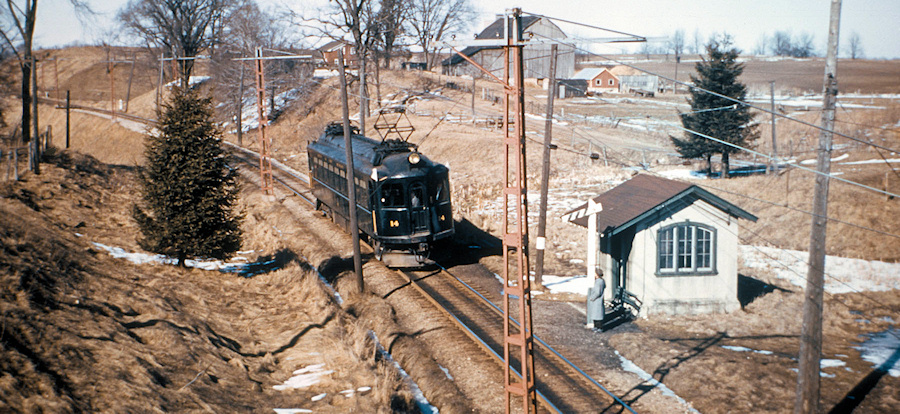 It was then that a group of London & St. Thomas people formed the Port Stanley Terminal Rail Inc. to purchase the line and rebuild it into an operating railway. The line’s potential as a tourist railroad was obvious. Port Stanley had a large beach and the quaint charm of a lakeside village. Geographically located between the large Detroit and Toronto markets, and just 20 minutes from the 401, highway. The line also had a scenic quality with a long history remembered by many. In the early days, the first task of the volunteers was finding the track. No trains had traveled to Port Stanley for over seven years. Trees, weeds and mud buried the right of way and road crossings were paved over. The formidable task of reopening the line was began with all the legal hurdles to be overcome adding to the problems. These people would not give up and the first train rides ran in 1983. By 1985 the railway’s volunteers had rebuilt the washout at Union for a fraction of the cost estimated by CNR. It was then possible to open the remaining section of the line. However, many more hurdles had to be overcome before this could be done. First there was the insurance crisis in 1985 plus a myriad of government red tape. Disagreements over operating authority, with adjoining property owners and many more, consumed more time and effort than the actual rebuilding of the track. Thousands of crossties needed replacement, switch turnouts and passing sidings were needed at Port Stanley, Whytes and St. Thomas. It was also not clear as to what operating regulations should apply. The operators had already taken steps to apply their own operating safety rules. It would take two more years before the PSTR would receive a Provincial railway charter, the first Ontario Railway Act since 1927. In 1988 the PSTR purchased the entire seven miles of property from St. Thomas Parkside to Port Stanley. Two more years of work, meetings and hearings remained before the PSTR would be allowed to operate over the entire line. Several operating restrictions lasted until the passing of the Ontario Shortline Railways Act in December of 1995. Starting in January of 1996 the PSTR could drop the practice of having to stop at each road crossing and flagging the train across. Also changed at this time were the restricted hours of operation. PSTR could now operate after sunset. There have been many changes over the years, both on and off the property. Although the PSTR is a company owned by shareholders, the contributions of the volunteers must not be underestimated. Without the knowledge and work of these people the trains would not run. All revenue generated from ticket sales has been used to pay taxes & insurance, repair track, purchase and upgrade equipment. Other costs include fuel, advertising, telephone, student wages & benefits, etc. The two stations, Port Stanley and Union, were in derelict condition when the line was taken over. Over the years both buildings have been improved at no little time and expense. The Port Stanley Station now has central air conditioning for the customers and staff’s comfort. Station agents for the past several years have been part time summer students. Souvenir sales help maintain these historic buildings. Except for the busy summer months trains are operated by volunteer crews who must undergo testing and pass rules tests developed by PSTR based on the Federal Railway operating codes. Over the years many people have volunteered their help in running the trains. PSTR is always on the lookout for new volunteers to help run the trains and perform other work. The experience can be a rewarding one with the chance to learn new skills. |
 |
|
In its years of operation, PSTR has carried thousands of passengers on the many trains safely. Over 400 departures take place each season carrying approximately 25,000 riders for the year. For dates and times that regular trains operate, please see our Operating Schedule. Many special charters also take place all year long. The heaviest time is during June when many school trips come for a train ride. More recently the special "Entertainment Train" has been placed in service. Licensed by LLBO, this train is available for special parties almost any time. PSTR equipment has been upgraded and improved over the years. Most of the passenger equipment are converted cabooses, which have been rebuilt into special and unique open and closed cars suitable for use in all seasons. The "Little Red Caboose" is a former CN flat top caboose that has been improved to accommodate children’s birthday parties on the train. PSTR has over 30 pieces of rolling stock on the property and the work of conversion upgrades is continuing. Tourism is our business and we are the longest running tourist attraction in Elgin County! 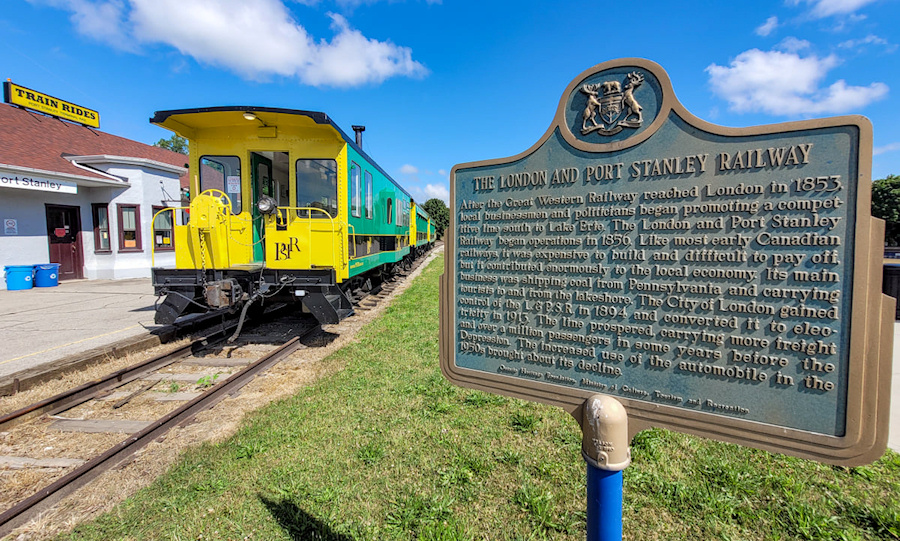 |
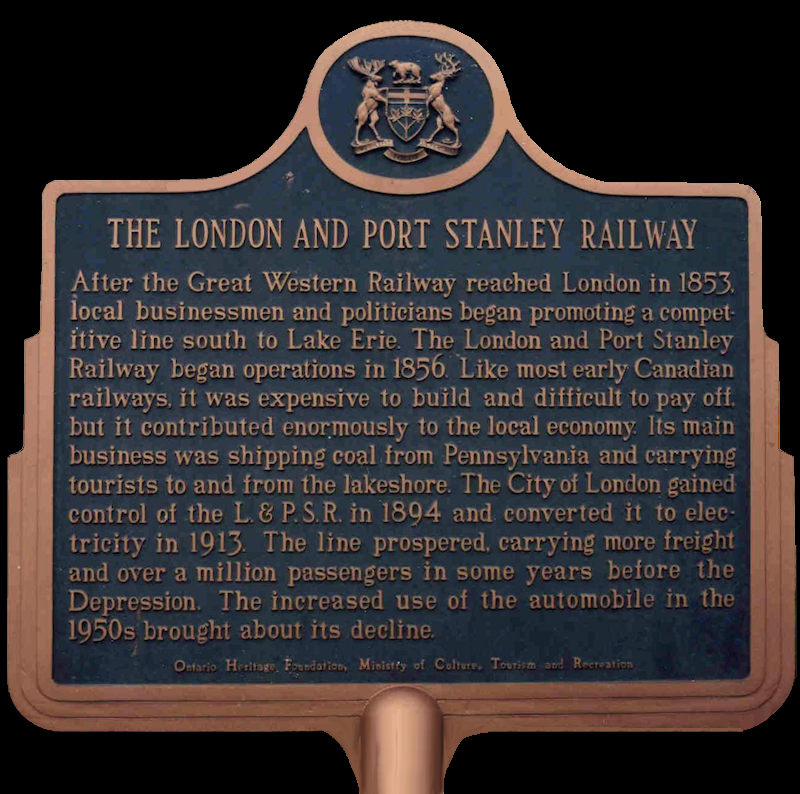 |
